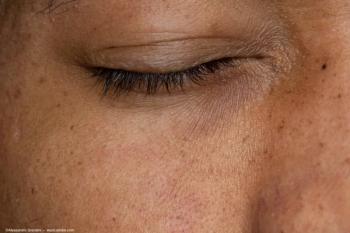
Proper use of antibiotics essential for good outcomes
Antibiotic resistance is a growing challenge, especially in ophthalmic surgery, and clinicians must remain vigilant and well informed to reduce the risk of infection in their patients, said Michael B. Raizman, MD, a cornea specialist with Ophthalmic Consultants of Boston.
Dr. Raizman, chairman of a continuing medical education symposium on maximizing outcomes through evidence-based medicine, described how advances in ophthalmology contribute to greater risk of infection.
Current fluoroquinolones "Bacteria are getting 'smart' and resistance is on the rise, so our older generation of fluoroquinolones can no longer be as effective as we would like," said Deepinder K. Dhaliwal, MD, director of refractive surgery and of the cornea and external disease service at the University of Pittsburgh Medical Center Eye Center.
Because of the decreased effectiveness, there is a need for new ophthalmic antibiotics with better gram-positive coverage, especially against Streptococcus; increased efficacy against resistant organisms such as Staphylococcus and against atypical mycobacteria; and better penetration into the anterior chamber, Dr. Dhaliwal said.
Fourth-generation fluoroquinolones gatifloxacin 0.3% (Zymar, Allergan) and moxifloxacin 0.5% (Vigamox, Alcon Laboratories) exhibit these characteristics and are less likely than the earlier-generation agents to be affected by genetic mutation or to select for resistance.
"Their structures look very similar, but there is one very important difference," Dr. Dhaliwal explained. Moxifloxacin has a bicyclic side-chain at C-7 that inhibits the cell's efflux pump mechanism and keeps the antibiotic in the bacterial cell longer. This also maximizes potency and further inhibits resistance. Only one bacterium in 10 trillion spontaneously develops resistance to the fourth-generation fluoroquinolones, she added.
The new antibiotics can be evaluated with criteria such as potency, bioavailability (penetration into the ocular tissues), and efficacy. Efficacy can be measured by pharmacodynamics and pharmacokinetics, Dr. Dhaliwal said. In simple terms, pharmacodynamics explores what a drug does to the body or to bacteria, while pharmacokinetics explores what the body does with the drug.
It is also important to learn the achievable concentration of antibiotics in the aqueous as well as to obtain figures on minimum inhibitory concentration of the drug, which is the lowest concentration of antibiotic required to inhibit bacterial growth, Dr. Dhaliwal said.
Newsletter
Don’t miss out—get Ophthalmology Times updates on the latest clinical advancements and expert interviews, straight to your inbox.


















































.png)


